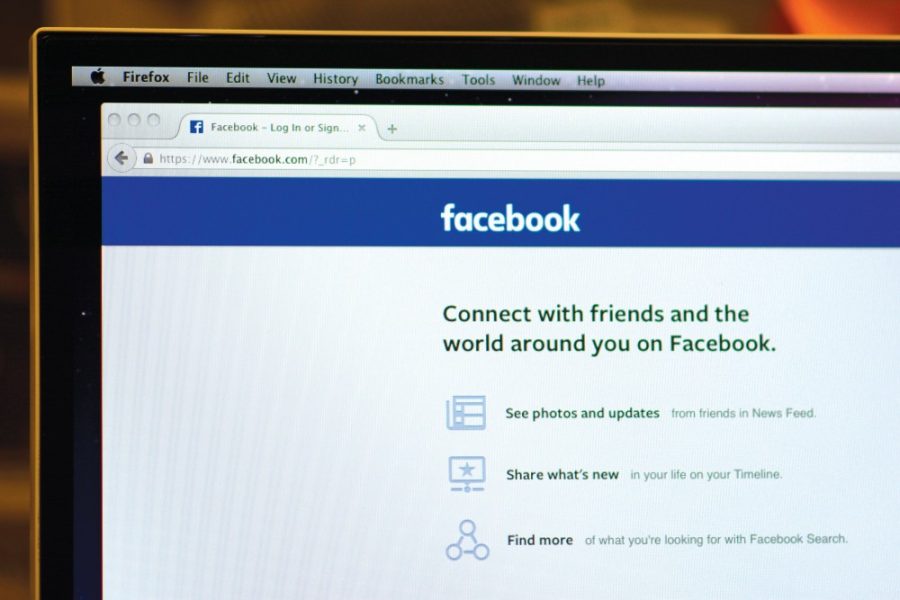Liking, down-voting, up-voting, sharing, deleting, requesting. You’re counting your likes, and then you’re counting their likes. It’s an abacus of worthiness as much as it is a portable peek into connection. A day with multiple chat boxes open is a good one; a day spent inside looking at other people’s fun outings is a bad one. Social media is this generation’s creation, and it’s time to start examining the extent of its effects.
Social media has played a starring role in some of the darkest tragedies in recent news. The Oct. 1 shooting at Umpqua Community College was directly linked to an anonymous imageboard on 4chan.org, when a message was anonymously posted stating, “Some of you guys are alright. Don’t go to school tomorrow if you are in the northwest.”
On Aug. 26, Vester Lee Flannigan II, a former news reporter from Virginia, shot his former colleagues Alison Parker and Adam Ward and then posted a video of his act on Facebook and Twitter. Media outlets have reported that both shooters struggled with mental illness, but social media may have been the sounding board that encouraged their atrocities and where others may be able to look to stop future violence.
“So many times, when they look back on these people’s social media accounts after the crime has been committed, it’s shocking to see the amount of posts that should send up red flags to all the people reading them, … yet no one says a word,” wrote Cassandra Rodriguez, a graduate student at the UA School of Information.
Rodriguez’s work is on conducting sentiment analysis on social media posts to measure the author’s emotions. This means running posts through various algorithms to measure their emotional value. Higher emotional content would be rechecked, most likely by a human, for danger signs. This could include the biting word choice of rage or perhaps the unrealistic whirlwind of mania.
In contrast, Dr. Joel Dvoskin, a clinical and forensic psychologist and assistant professor of psychiatry at the UA, suggests having algorithms identify social media users in this way may be misleading because, in some instances, this behavior may be healthy.
“For some people, the ability to communicate may in some ways be to mitigate a threat,” Dvoskin said. “People can in some ways be satisfied by communicating their rage through [social media].”
Though some posts share certain aspects, researchers can’t immediately assume that they suggest an immediate danger to themselves or others.
“There are common characteristics—anger, social disconnectedness, feelings of insignificance,” Dvoskin said. “Those are so common. [But] the vast majority of people who have these characteristics are never going to hurt anybody.”
On the other hand, the power of community in the hands of people in similarly psychologically fragile states has the ability to turn a nonstandard belief into a war cry. A prime example is now defunct forum PUAhate.com, or Pickup Artist Hate, which Santa Barbara shooter Elliot Rodger is known to have frequented. What began as dating frustration escalated into full-blown misogyny and hate speech against women and other men, those deemed to be “pick up artists.”
Overall, voicing mental distress on social media seems to be in some ways therapeutic until a desire to share stories over the same struggles becomes a call to arms backed by hate speech. It is when what seems to be mere text and venting starts hitting this area of rage and utter frustration that most people agree something must be done.
Mass shootings are statistically isolated events, though disproportionate media attention seems to make viewers think otherwise. As much as they are linked to mental illness, mental illness is not something to be feared as much as it something to be treated.
“Forty-four percent of adults and about 20 percent of children and adolescents don’t receive treatment for [their mental disorders],” said Dr. Christina Cutshaw, an assistant professor of public health at the UA’s Mel and Enid Zuckerman College of Public Health.
Social media can help those demonstrating signs to get the help they need if they are properly identified.
“Some of [Facebook] posts can serve as confessions in themselves,” said anthropology junior Michael Chikos on Facebook in response to a discussion on mental health and social media. “Illustrations like ‘How depression feels’ or links [such as] ‘Things only people with social anxiety disorder understand’ send the implicit message that one goes through mental distress.”
How can we help those suffering online? Changedirection.org, a website dedicated to helping people identify mental suffering online or in person, cites five specific behaviors as very important warning signs: poor self-care, agitation, personality change, withdrawal and hopelessness. The site suggests that observers should take initiative and talk to someone who they are worried about, as they may not feel like they can reach out for help.
“Some people who are looking for help may not be willing to tell people in person,” said Martin Ruiz, a junior studying accounting and finance. “[However] there is something about [being] behind a keyboard that makes it easier for people to express their true feelings.”
Follow Alexandria Farrar on Twitter.









